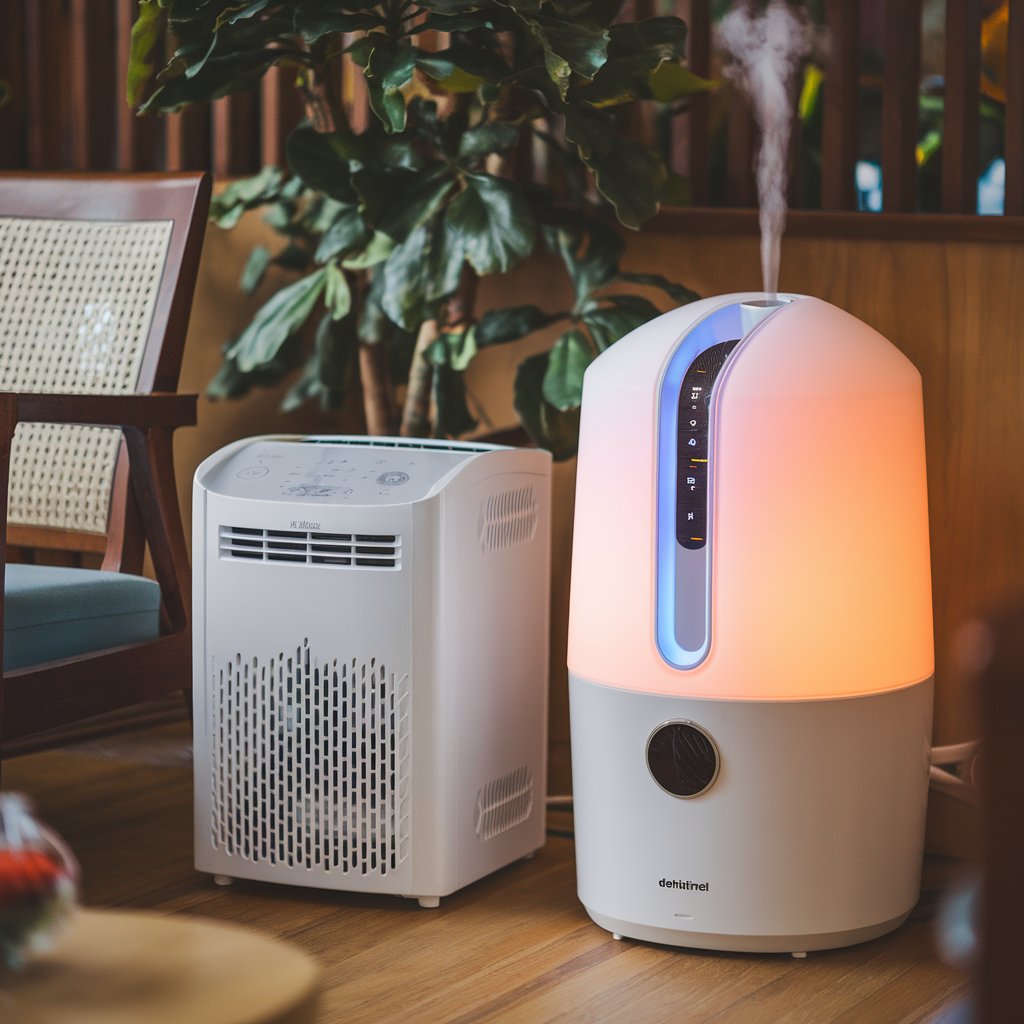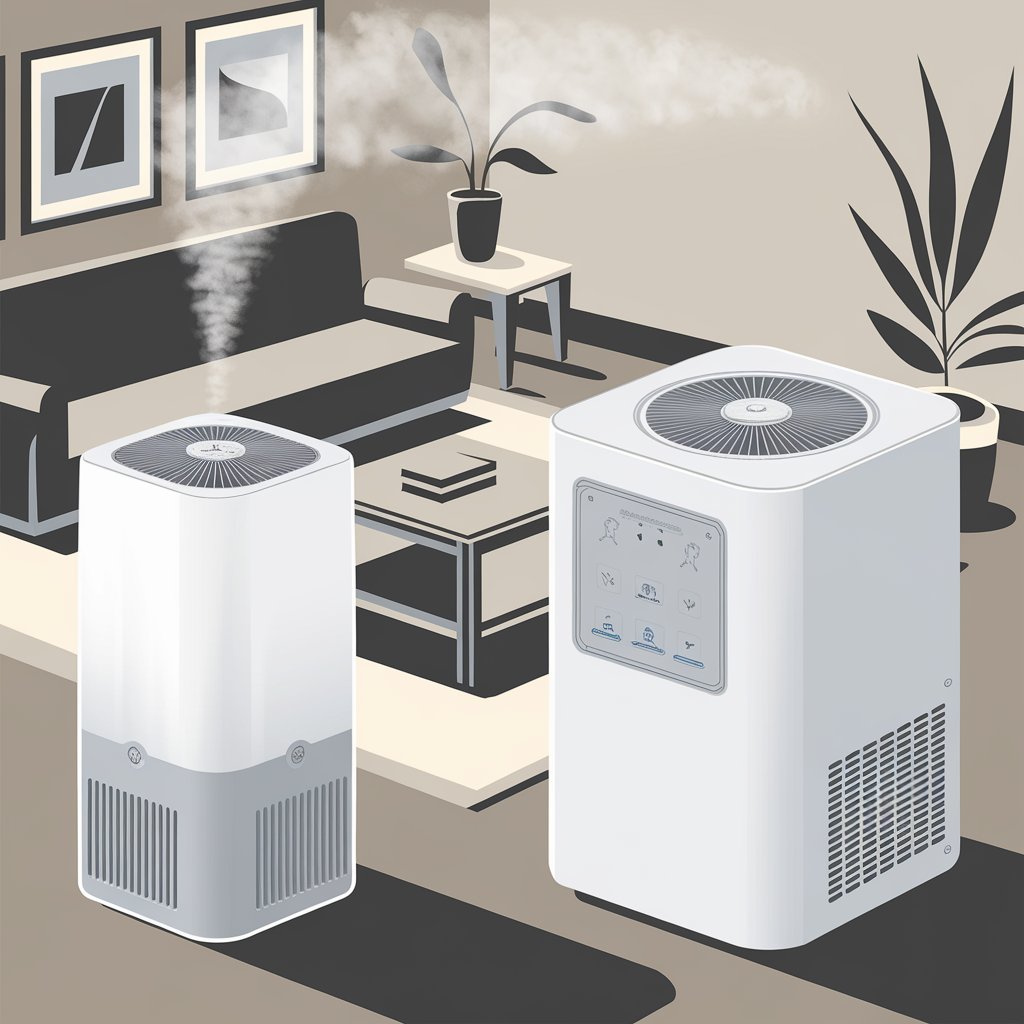Physical Address
304 North Cardinal St.
Dorchester Center, MA 02124
Physical Address
304 North Cardinal St.
Dorchester Center, MA 02124

When it comes to indoor air quality, understanding the roles of humidifiers and dehumidifiers can make a world of difference. I often find myself wondering how these two devices impact our comfort and health. While both tackle humidity levels, they serve completely different purposes.
A humidifier adds moisture to the air, making it ideal for dry environments or during cold winter months. On the f
When it comes to indoor air quality, understanding the roles of humidifiers and dehumidifiers can make a world of difference. I often find myself wondering how these two devices impact our comfort and health. While both tackle humidity levels, they serve completely different purposes.
A humidifier adds moisture to the air, making it ideal for dry environments or during cold winter months. On the flip side, a dehumidifier removes excess moisture, helping to combat mold and mildew in damp spaces. Knowing when to use each can enhance your living environment and improve overall well-being. Let’s dive deeper into how these devices work and when to choose one over the other.

Humidifiers enhance indoor air quality by adding moisture, creating a comfortable environment in dry conditions. I’ll explain how they work and the different types available.
Humidifiers operate by releasing water vapor or mist into the air. They use one of several methods to achieve this, including:
Each type serves the purpose of increasing humidity levels, making spaces more comfortable.
Several types of humidifiers cater to different needs. Here are the most common options:
Selecting the right humidifier type depends on personal comfort, specific needs, and the environment’s existing humidity levels.
Dehumidifiers play a crucial role in maintaining a dry indoor environment, particularly in areas with high humidity levels. They efficiently reduce excess moisture in the air, improving comfort and preventing issues like mold growth.
Dehumidifiers operate by drawing humid air into the unit and removing moisture through condensation. The process begins when warm, damp air passes over cold coils within the device. As the air cools, the moisture condenses into water droplets, which collect in a reservoir. The drier air is then released back into the room. In more advanced models, some dehumidifiers utilize heat exchangers to enhance energy efficiency, making the process quicker and more effective.
Dehumidifiers come in several types, allowing users to choose a model that best suits their needs. Here are the main types:
Choosing the right dehumidifier type depends on factors like the size of the area, humidity levels, and personal preferences.
Humidifiers and dehumidifiers serve opposite functions in managing indoor air quality. Understanding their distinctions enhances decision-making for indoor comfort.
Humidifiers add moisture to the air by releasing water vapor or mist, which is beneficial in dry conditions. They operate using different methods, like evaporative, ultrasonic, steam vaporizer, or impeller technologies. Each type caters to unique preferences and needs, such as warm mist for comfort in winter months or cool mist for a refreshing feel during summer.
Dehumidifiers remove excess moisture from the air to maintain optimal humidity levels. They draw humid air into the unit, where moisture is extracted through condensation. The drier air is then released back into the environment. Different models, such as refrigerant, desiccant, whole-house, and portable units, address varying humidity levels and room sizes.
Humidifiers improve indoor air quality by increasing humidity levels, which can relieve symptoms of dryness like skin irritation or respiratory issues. Maintaining a balanced humidity level with a humidifier promotes overall comfort and helps protect wooden furniture and floors from cracking due to excess dryness.
Dehumidifiers enhance indoor air quality by preventing excessive moisture build-up, which can lead to mold growth, mildew, and dust mites—common allergens. Maintaining lower humidity levels leads to healthier environments, particularly in basements or rooms prone to dampness. This process effectively reduces allergens and protects personal belongings from moisture damage.
Selecting the appropriate device hinges on various factors. Knowing these factors ensures effective management of indoor air quality.
Understanding the difference between humidifiers and dehumidifiers is essential for maintaining a comfortable indoor environment. Each device plays a unique role in managing air quality. By using a humidifier in dry conditions I can alleviate discomfort and protect my belongings. On the other hand a dehumidifier is my go-to for damp areas to prevent mold and allergens.
Choosing the right device based on my specific needs can significantly enhance my indoor atmosphere. Whether I need to add moisture or remove excess humidity knowing when to use each device makes all the difference. With the right approach I can create a healthier and more comfortable living space.